St. Nicholas Day
St Nicholas Day, known as Nikolaustag in Germany, is celebrated on the 6th of December. Children leave a pair of cleaned boots outside their door on the evening of the 5th. The boots are then filled with sweets and small gifts. According to legend, Nicholas of Myra gave a poor father money in order to prevent his daughters from being taken into slavery, as the father did not have the funds for his daughters’ dowries. He threw the money through the family’s window, which landed in their shoes, which were drying near their fireplace.
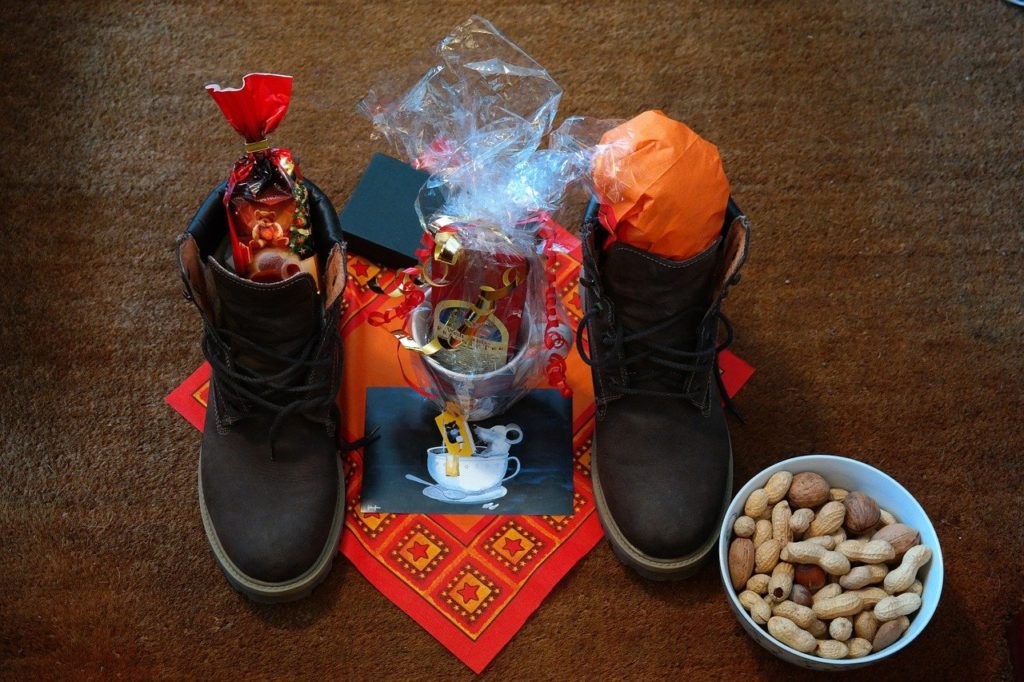
Advent
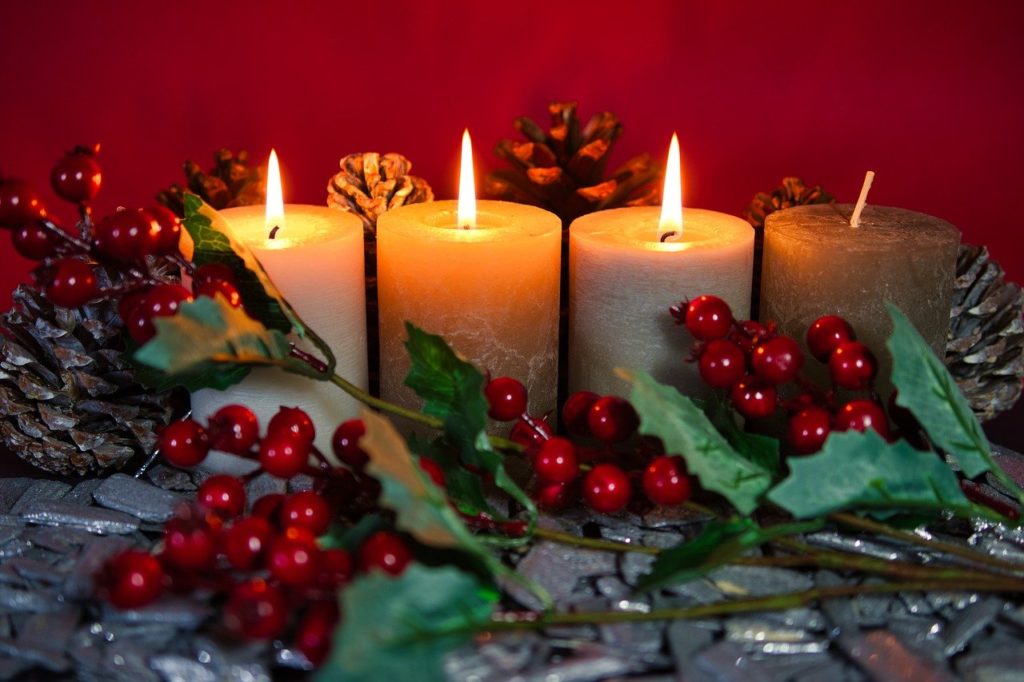
Advent is celebrated on the 4 Sundays before Christmas. It is a Christian tradition to prepare for the arrival or coming of Jesus Christ.
The first Advent is the first Sunday after 26 November.
Advent wreaths have four large candles, which represent the four weeks of Advent and one candle is lit each Sunday. Families spend some quiet and reflective time together and sing Christmas carols. Drinking and eating typical Christmas food like Stollen, Glühwein (mulled wine), roasted almonds and chestnuts
The first candle represents Hope, the second Faith, the third Joy and the final candle Peace.
Advent Calendar
The Advent calendar counts down the four weeks leading up to Christmas Eve. Every day a new door of the calendar is opened to reveal a small chocolate or a gift. Originally they concealed a picture or bible verse.
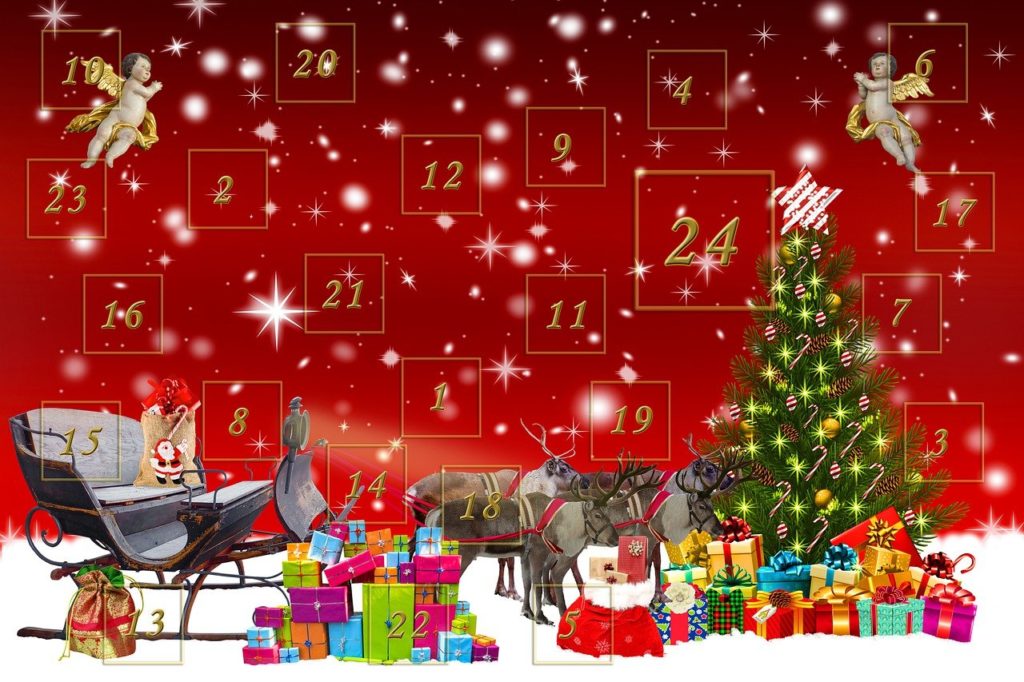
Christmas Tree (Tannenbaum)
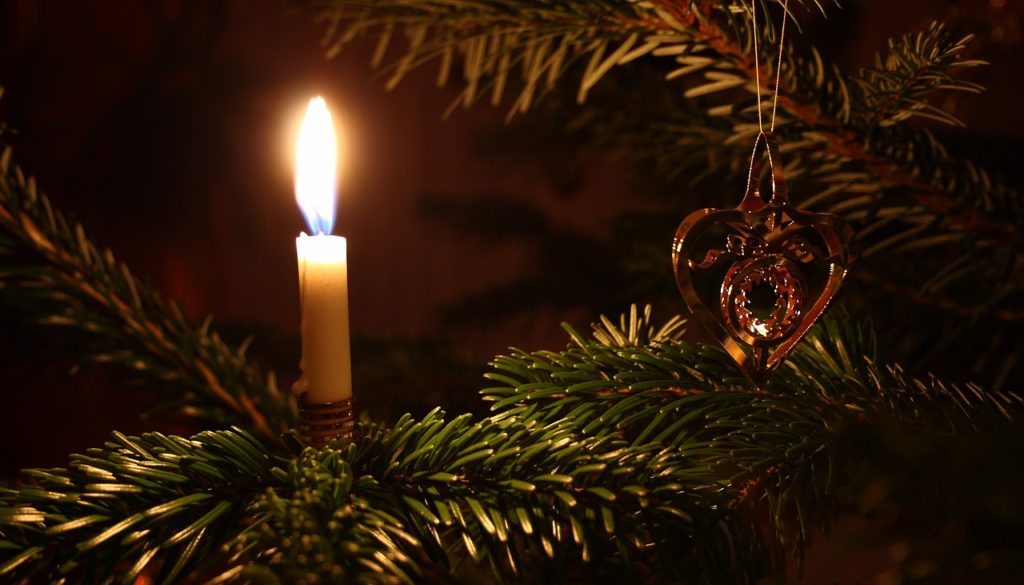
The first known Christmas tree was set up in 1419 in Freiburg by the town bakers They decorated the tree with fruits, nuts, and baked goods, which the children were allowed to remove and eat on New Year’s Day.
In Germany, you set up and decorate the tree on Christmas Eve. It is traditional to use a real fir tree. The tree is taken down in January and there are specific days for disposal
Christmas markets
Most town squares transform into beautiful Christmas markets. Traditionally there will be a big Christmas tree and Nativity scene (Krippe). Additionally, there are where you can buy delicious food, warm drinks and handmade gifts. It is a wonderful place to meet up with friends for some Glühwein while listening to carol singers
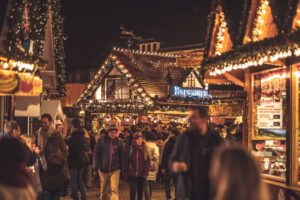
Christmas Markets
Visiting Christmas markets in Germany is a delightful way of celebrating the festive season. The heavy scent of sweets, fried sausage and warm wine welcome
Krippe
The nativity scene is called a Krippe. It is usually put up in homes, churches and Christmas markets.
You can buy the individual pieces at Christmas markets. Look for wooden hand made pieces
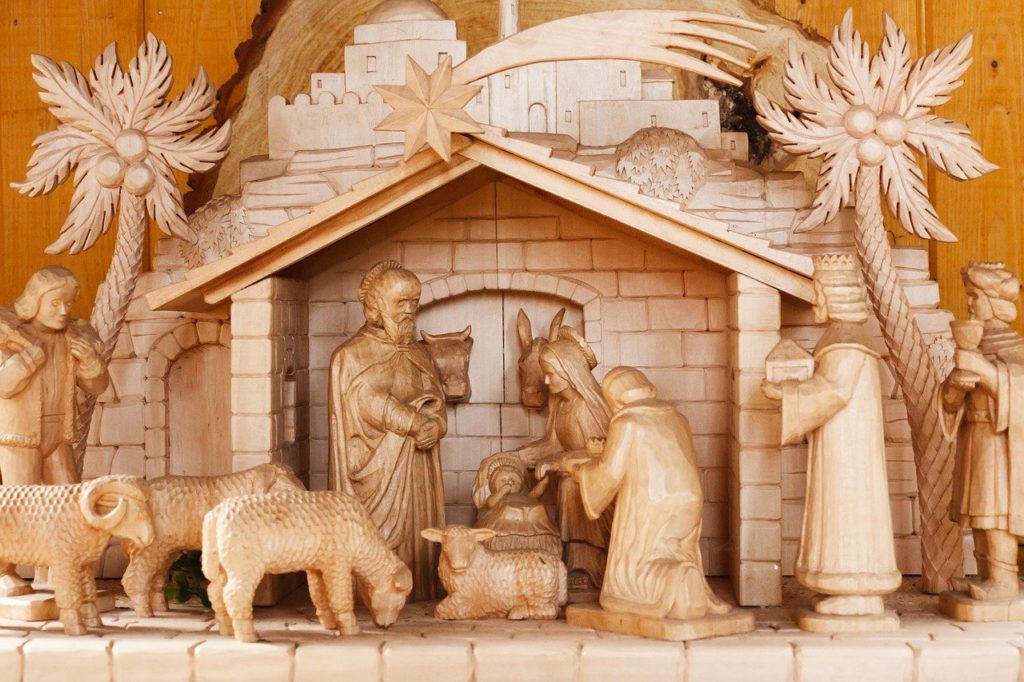
Weinachtspyramide
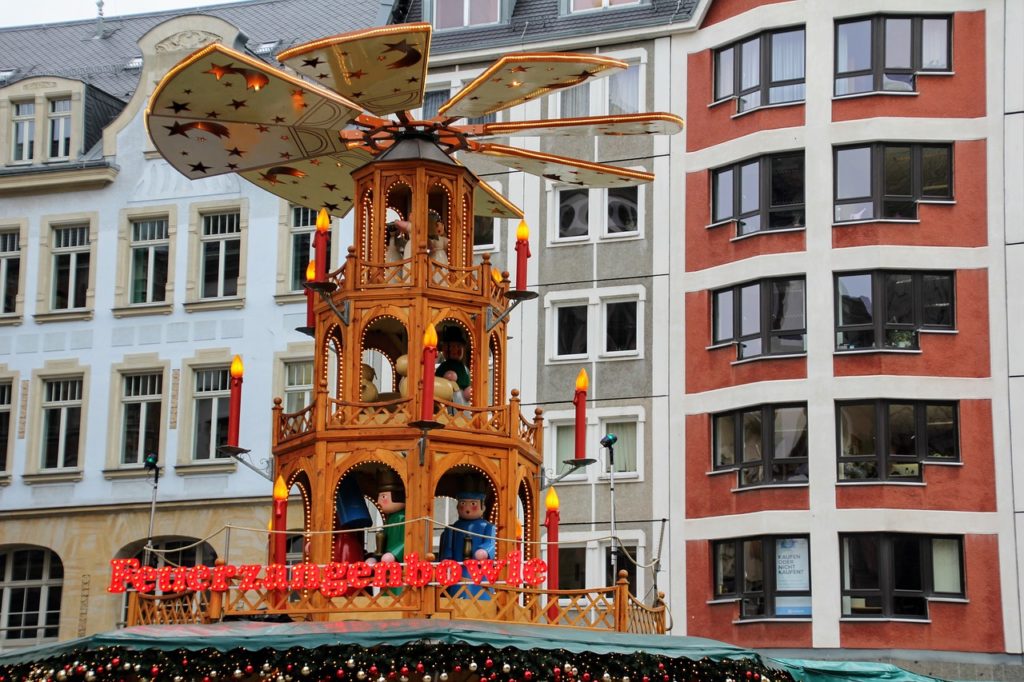
A wooden carousel with angels and a nativity scene. It has several levels and spins with the help of heat from candles. The larger ones you find at Christmas markets work with electricity
Nutcracker dolls
Nutcracker dolls originate from late-17th century Germany, particularly the Ore Mountains (German: Erzgebirge) region.
The average handmade Nutcracker doll is made from 60 separate pieces and it takes a great deal of time and effort to bring them to life. Every detail of the doll is carefully crafted, from the hair to the clothes and everything in between.
They are made to resemble a toy soldier.
Traditional Nutcrackers were functional and used to crack nuts, modern ones are more decorative.
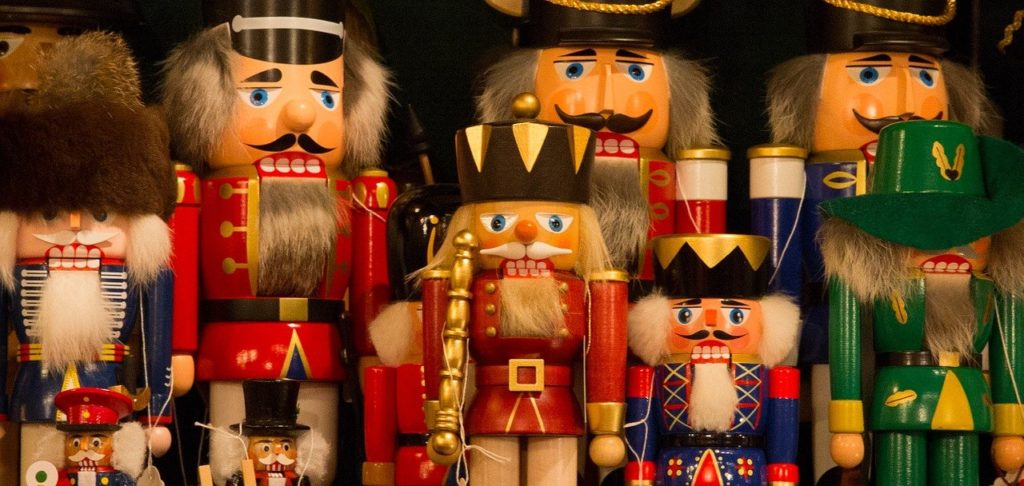
Schwibbogen
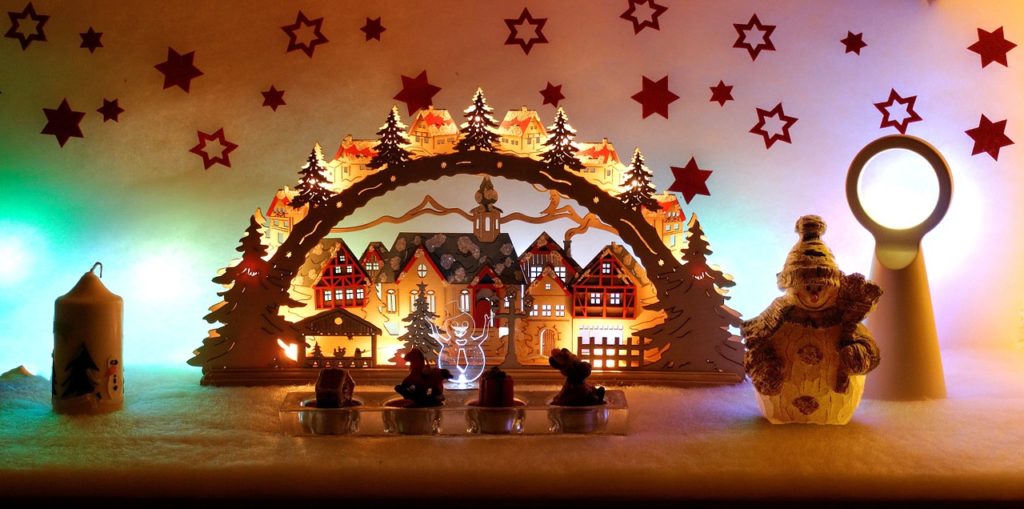
Also called a Lichterbogen, is a beautiful decorative arch originating from the Ore Mountains in Germany. The Schwibbogen is traditionally made of wood and features intricate cut-out designs, often depicting scenes from daily life or folklore. They are illuminated with candles or electric lights, creating a cosy and festive atmosphere.
They also hold cultural significance for the people of the Ore Mountains. The Schwibbogen is believed to symbolize a coal mine’s entrance, highlighting the region’s important mining history. Additionally, many Schwibbogen feature religious motifs, representing the Christian roots of the Ore Mountain communities.
Christmas Eve
Time to set up the tree, enjoy a simple meal with family and exchange gifts.
The traditional meal for the 24th consists of carp, boiled potatoes, cucumber salad and lemon slices. Another alternative is Sausages with potato salad
Christmas Day
Many families attend church services and sing traditional Christmas carols
A large meal is traditionally eaten in the afternoon or early evening.
Typical dishes include Roast goose or duck stuffed with apples, chestnuts, onions or prunes. Dumplings and Red cabbage with onions and apples are served as side dishes.
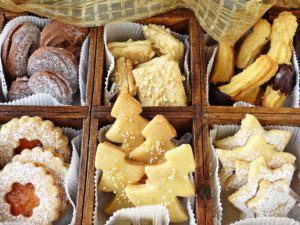
German Christmas Recipes
Baking cookies for Christmas is what childhood memories are made of. We will list some websites here where you can find authentic Christmas recipes. Typical Christmas food Zimtsterne Pfeffernüsse Vanillekipferl
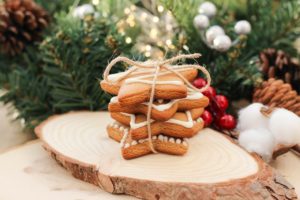
Traditional South African Christmas Recipes
A selection of traditional South African Christmas recipes. You are most welcome to share your recipes with us via the link below. Click here to submit your recipe Related content

Christmas Markets
Visiting Christmas markets in Germany is a delightful way of celebrating the festive season. The heavy scent of sweets, fried sausage and warm wine welcome you to a variety of

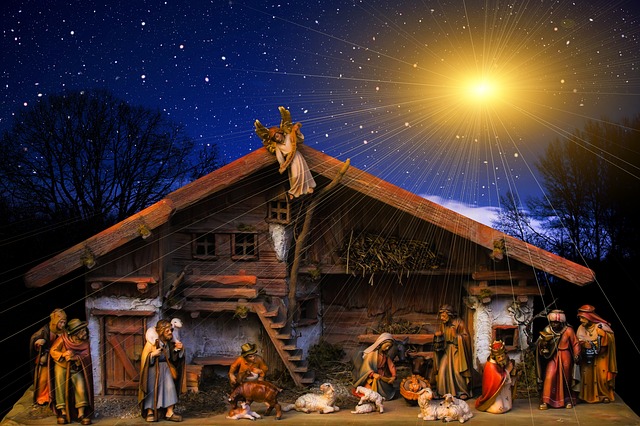

You must be logged in to post a comment.